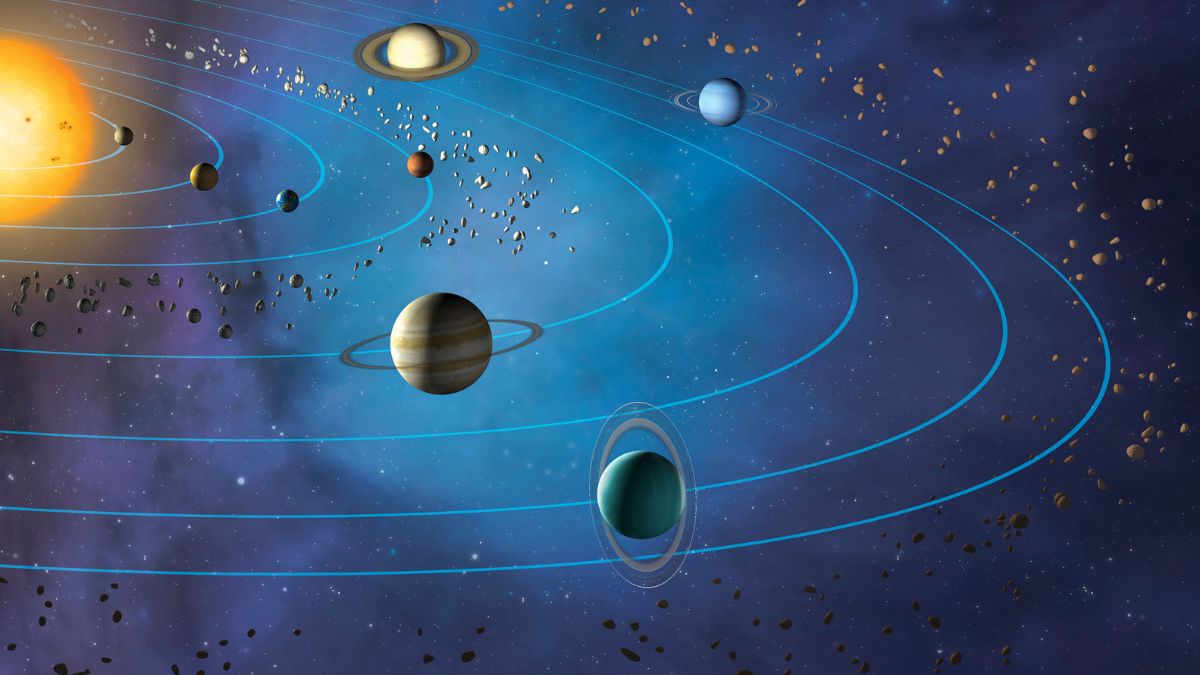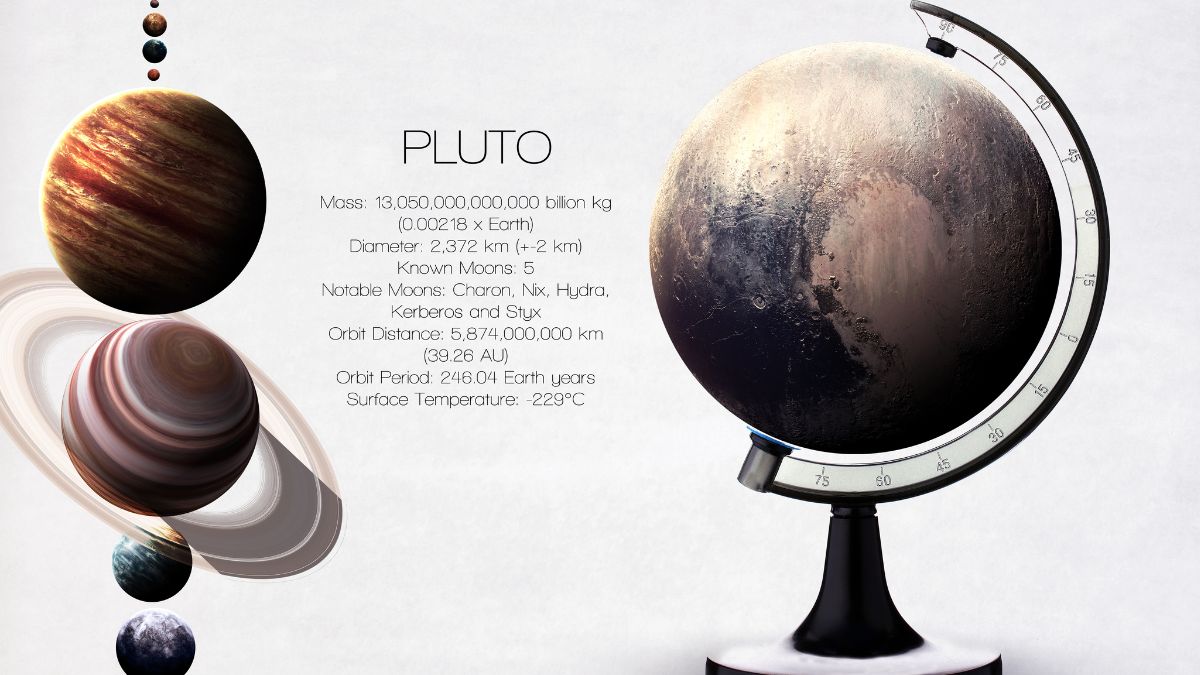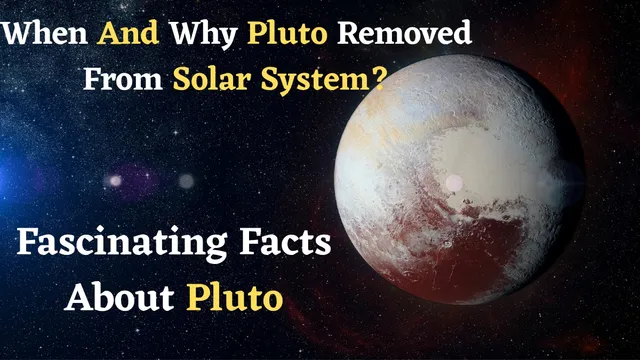- By Aditi Priya Singh
- Sun, 24 Aug 2025 12:42 PM (IST)
- Source:JND
All About Planet Pluto: The current solar system was not always like this. On August 24, 2006, a big change in our definition of planets occurred, also referred to as Pluto Demoted Day. Pluto was adored by schoolchildren and admired by stargazers for many years as the ninth planet in our solar system. However, scientists discovered that the previous definition of a planet was no longer valid as they gained knowledge about space and the numerous objects orbiting beyond Neptune.
Pluto, despite its uniqueness and fascination, failed to meet all of the new regulations established by the International Astronomical Union (IAU). Many people worldwide were surprised when Pluto was reclassified as a "dwarf planet" as a result of this decision. This announcement even triggered debates, feelings and even campaigns to restore Pluto again.
Despite losing its planet title, Pluto continues to be one of the most interesting and studied celestial bodies in space. Today, on Pluto Demoted Day, let's know all about Pluto, from its discovery to why and when it was demoted from the solar system.
The Discovery of Pluto
-1756019304296.jpg) Discovery of Pluto (Image: Canva)
Discovery of Pluto (Image: Canva)
On February 18, 1930, Clyde Tombaugh made the discovery of Pluto at the Lowell Observatory in Arizona, USA. Astronomers were looking for a mysterious ninth planet that was thought to exist outside of Neptune at the time. Since Pluto appeared to complete the solar system as we know it, its discovery was hailed as a breakthrough.
For many years, Pluto was taught as the ninth planet in schools. It is a tiny, icy world that is part of the Kuiper Belt, an area at the edge of our solar system that is full of icy objects. Despite being significantly smaller than the other planets, its discovery sparked interest in the furthest reaches of space.
ALSO READ: Which Planet Is So Big That All Other Planets Could Fit Inside It?
Why and When Pluto Was Removed As a Planet From the Solar System?
 When and why Pluto was removed from the solar system (Image: Canva)
When and why Pluto was removed from the solar system (Image: Canva)
On August 24, 2006, which is now known as Pluto Demoted Day, Pluto was demoted. This occurred as a result of a new definition of a planet being developed by the International Astronomical Union (IAU).
According to this rule, a planet must meet three main conditions:
1. It must orbit the Sun.
2. It must be round in shape.
3. It must clear its orbit of other objects.
Since Pluto's orbit is shared by numerous other icy objects in the Kuiper Belt, it failed the third requirement. Consequently, it was reclassified as a "dwarf planet." Other dwarf planets are Haumea, Eris and Makemake.
Reaction from People on removing Pluto as a Planet
Many people were disappointed and shocked when Pluto was delisted as a planet in 2006. Pluto was taught as the ninth planet in school, which made space enthusiasts, educators, and students sad. While some embraced the decision as a step towards greater scientific understanding, others even protested it.
Fascinating Facts About Pluto
 Fascinating facts about Pluto (Image: Canva)
Fascinating facts about Pluto (Image: Canva)
1. Smallest "Planet" in the Past
The moon is larger than Pluto, as it is only roughly 2,377 kilometres in diameter.
2. Extremely Cold up to -229 degrees Celsius
Pluto is extremely cold, with a surface temperature of about -229°C, and it takes sunlight 5.5 hours to reach it due to its distance from the Sun.
3. A Year Lasts 248 Earth Years
Pluto takes 248 Earth years to complete one orbit of the Sun.
4. Strange Seasons
Each season lasts more than 20 years on Pluto due to its long orbit and tilted axis.
5. Has Five Known Moons
Pluto has a total of five known moons: Charon, Nix, Hydra, Kerberos and Styx. Charon is the largest moon of Pluto and is nearly half as big as Pluto.
6. Heart-Shaped Region
Pluto has a heart-shaped area called Tombaugh Regio, named after its discoverer, Clyde Tombaugh.
7. Made of Ice and Rock
Pluto’s surface contains frozen nitrogen, methane and carbon monoxide along with rocky materials.
8. Not Alone in Its Neighbourhood
Pluto is part of the Kuiper Belt, a region filled with icy bodies and dwarf planets.
9. Thin Atmosphere
Pluto has a very thin atmosphere made mainly of nitrogen, which expands when it is closer to the Sun and freezes when it moves away.
10. New Horizons Mission
NASA’s New Horizons spacecraft gave us the first close-up pictures of Pluto in 2015, revealing its fascinating surface and details.
ALSO READ: Which Planet Can Float On Water?
Current Status Of Pluto
Pluto is still an important celestial body in the solar system and was visited by NASA’s New Horizons mission in 2015. The change reminds us that science never stops evolving. As we discover more about space, our understanding of the universe will continue to grow and transform.

